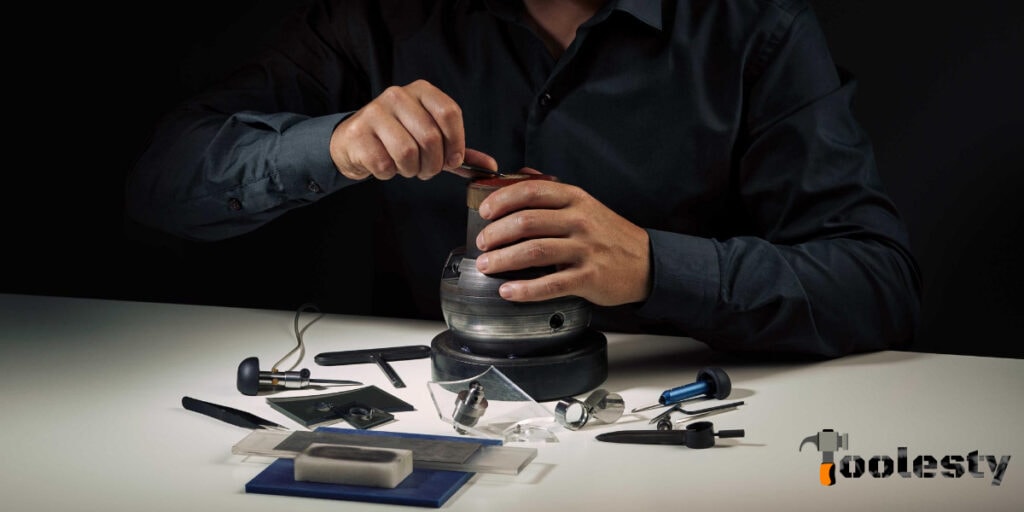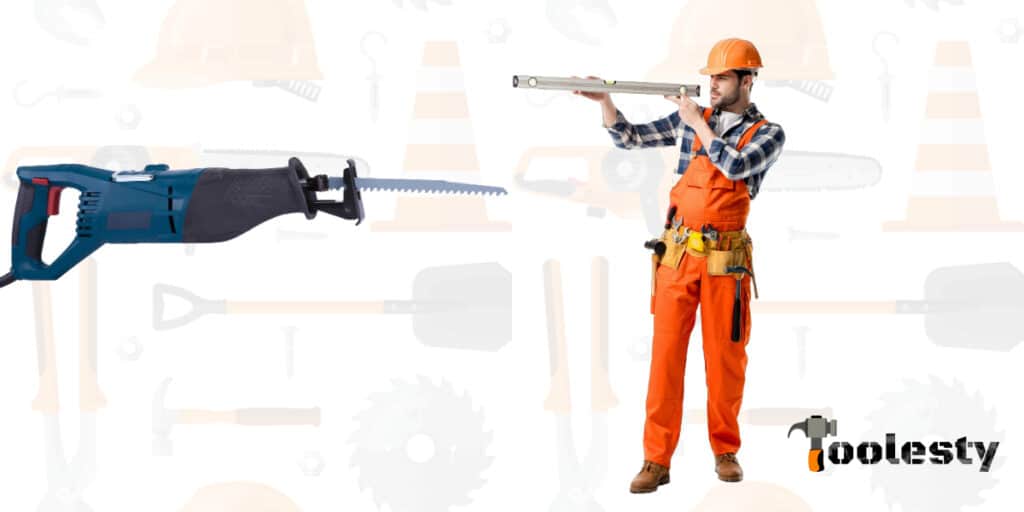The chain saw as we know it today as a complex yet handy power tool for cutting down logs, trees and removing tree stumps was not invented for wood workers. So, why was the chainsaw invented? Dr. James Jeffray and Dr. John Aitken invented chainsaw for use in the caesarian section for dealing with difficult childbirths. The goal was to replace small knives for cutting pelvis cartilage and widening woman birth canal to ease the caesarian operation process for oversized babies. It was also widely accepted by medical surgeons for amputation operations.
The chainsaw is a power tool that consists of a large chain that is closely set with sharp teeth (or multiple cutting edges). The term chainsaw also refers to a portable, gasoline-powered saw that cuts with a rotating chain that is moved by a motor. Invented in the 18th century, chainsaws are used in the modern-day to cut down trees for lumber in mills. They are also used in the film industry to simulate battle scenes and dying people.
Why Was The Chainsaw Invented
As unbelievable as it may sound, the chainsaw was initially intended to be used as a surgical tool. In the 18th century, the Caesarian method of child delivery wasn’t existent and delivering breeched, or oversized babies seemed impossible. To ease the delivery process in cases like this, doctors had to cut through cartilages around the pelvis area to widen it – this procedure is called “symphysiotomy.”
Before the invention of the chainsaw in the 1780s, small knives were used for symphysiotomy. The use of small knives for this surgery made the process long, painful, and unbearable to women in labor, as anesthesia wasn’t even invented at the time. So, the hand crank chainsaw wasn’t just a surgical tool at the time but a lifesaver too.
The chainsaw made symphysiotomy quicker, cutting pelvic bone and cartilage more precise, and slightly less painful, which made it a massive breakthrough in the world of medical surgery at the time. The process was explained in John Aitken’s book ‘Principle of Midwifery and Puerperal Medicine,’ pelviotomy.
You might probably have a mental picture of the modern chainsaw and how gory the whole procedure may seem. But the first chainsaw is nothing like the woodworking electric chainsaw we know today. It looked more like a knife with a chain, wounded with tiny sharp teeth, and was controlled by a hand crank. The chainsaw was predominantly used in the 19th century until anesthesia was first invented in 1846 and first used for childbirth by Sir James Y. Simpson in 1847.
Right before Lumberjacks and Wood workers realized the power of the chainsaw and its ability to cut through dense materials, this tool was also used in medical surgery for a surgical process called amputation; cutting diseased bone.
After its era as a surgical tool in the late 19th century, the chainsaw was used full-time for felling trees, with the first endless chainsaw granted to Samuel .J. Bens from San Francisco in 1905. In 1918, the first portable chainsaw was also invented by a Canadian millwright, James Shand, whose invention was later redesigned by a German company, Festo, in 1933. This company later went ahead to create other versions that used electricity and gasoline to operate.
Right before Lumberjacks and Wood workers realized the power of the chainsaw and its ability to cut through dense materials, this tool was also used in medical surgery for a surgical process other than the caesarean section. For amputation; cutting diseased bone.
After its era as a surgical tool in the late 19th century, the chainsaw was used full-time for felling trees, with the first endless chainsaw granted to Samuel .J. Bens from San Francisco in 1905. In 1918, the first portable chainsaw was also invented by a Canadian millwright, James Shand, whose invention was later redesigned by a German company, Festo, in 1933. This company later went ahead to create other versions that used electricity and gasoline to operate.
Today, the once horrific surgical tool is now being used for a more suitable line of work. With over 3 million chainsaws sold annually in the USA, it sure shows how timeless and versatile the chainsaw has proven to be over the years.
However, one thing that hasn’t changed is the gory characteristic of the chainsaw. The chainsaw is responsible for an average number of 23 179 fatalities annually, hence, the need to prioritize the safety guidelines of this tool. Chainsaws have now been redesigned and made bigger to make cutting and slicing through things that are no longer human parts more efficient.
According to the Centers for Disease Control and Prevention, about 31% of child delivery in the US was done through the C-section with a low mortality rate of 2.2 per 100,00 Cesarean section delivery, thereby obsolescing the need.
Inventors of Chainsaw
Sometime in the late 18th century, two Scottish doctors – James Jeffray and John Aitken invented the chainsaw, the famous multi-functional cutting tool. While this invention’s exact year is not known, records have it that its creation took place between 1783-1785.
James Jeffray, the acclaimed mastermind behind the chain saw’s invention, was born in 1759 in a town called Kilsyth, famously known for its religious revivals through the 18th to 20th century and the Battle of Kilsyth.
He got his first degree at the age of 19, graduating MA from Glasgow University, having studied Sciences. That wasn’t the end of his educational journey. James Jeffray still went ahead to study Medicine at Edinburgh University, graduating MD at 27.
Before his death in 1848, James had several notable accomplishments. Being an alumnus of Glasgow University and a commendable Scientist, he held the twin chairs of Anatomy and Botany of his alma mater in 1790, up until his painful demise. Under the reign and supervision of Lord Succoth, Sir Ilay Campbell, he got elected as the Vice-Rector.
In 1813, James got wrongly accused by a mob of his association with stealing the corpse of Janet McAlister from Ramshorn Cemetery, which was against the Murder Act of 1751 that only accepted the dissection of bodies executed for murder.
James also became the joint founder of Glasgow Botanic Gardens, alongside Thomas Hopkirk of Dalbeth. In 1810, James Jeffray married Margaret Lockheart, who bore him two sons, James, and John Jeffray. James died at 89 and was buried in the Glasgow Necropolis.
The other mastermind behind this invention was John Aitken. In 1770, he became a fellow of the Royal College of Surgeons of Edinburg (RCSEd). This was after his incomplete studies at the University of Edinburgh around 1763to 1769.
Aitken is associated with many invaluable literature and publications on surgery, physiology, anatomy, midwifery, and medicine that served as a point of reference in the late 18th century and up until the 19th century. He was also a surgeon at the Royal Infirmary, where he taught the medical curriculum and covered most of its subjects. John Aitken died in 1790, after lecturing for eleven years at the infirmary.
The saw industry has been revolutionized ever since. Chain saws have been modified massively and now powered by both electric and gasoline. Other saws like band saw, miter saw, circular saw, reciprocal saw, jig saw etc are invented but the chainsaw never lost it’s appeal.
The whole story of why was the chainsaw invented is both scary and fascinating. Whether or not James Jeffray and John Aitken knew they were creating a tool that’ll end up being essential in the construction industry today. It sure is a vast relief that women do not have to go through that horrific delivery process anymore.





